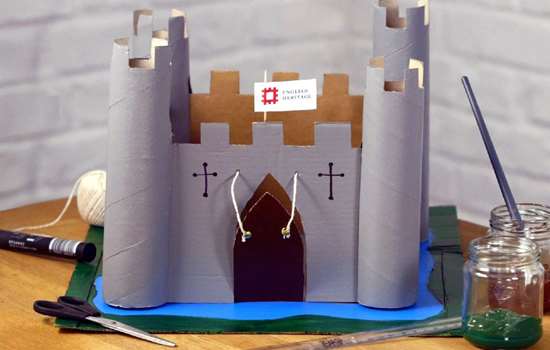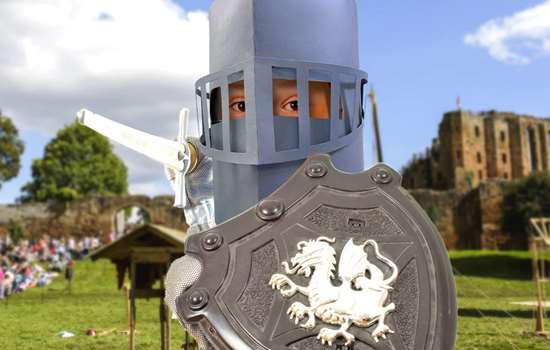What is a siege?
Imagine living in a castle: with high walls, turrets and maybe even a moat, you’d feel very safe and secure, wouldn’t you? But for medieval castle defenders, even the protection of an imposing fortress sometimes wasn't enough to stop enemy forces from trying to attack by laying siege to it. They would try to take over the castle by attacking the people inside it, cutting off essential supplies like food, and even attempting to demolish the structure itself.
Dover Castle in Kent managed to resist sieges in 1216 and 1217, even though the attackers built a siege tower (pictured) and bombarded the castle walls using mangonels (which were like giant catapults). Scarborough Castle in North Yorkshire wasn’t so lucky when it endured a five-month siege as part of the Civil War in 1645. Its walls were pounded with cannon balls weighing up to 29kg and the defenders eventually had to surrender when they ran out of first gunpowder, then money, and finally food.
The siege at Kenilworth Castle
As endless as five months of living under attack must have seemed to the defenders of Scarborough Castle, it wasn’t as long as the siege that took place almost 400 years earlier at Kenilworth Castle in Warwickshire (pictured).
In the mid-1260s, England was divided by a civil war between Henry III and rebel barons. The rebels’ leader, Simon de Montfort, had just died in battle. His supporters massed inside Kenilworth Castle and pledged to fight on. It took months for the king’s army to gather and prepare to attack the castle. The king tried to frighten the rebels, then to negotiate with them, but neither side would give in.
Life under siege
The king and his eldest son, Edward, led their army. Edward’s siege tower (pictured) reached the castle, but it was destroyed before soldiers could climb over the wall. Stones fired from opposing trebuchets were described as ‘clashing in the air’.
The siege started on 25 June 1266. Kenilworth Castle was sheltering 1,200 men along with their wives and children, who had to endure bombardment from siege engines and watch as the king’s army prepared to attack. Inside the castle, food was scarce and many people became ill. On 14 December 1266, the exhausted rebels surrendered and King Henry unexpectedly allowed them to leave. But violence flared up again around the country. Peace was finally secured after another siege in London.
Write your siege diary
Now you’ve read about the siege of Kenilworth Castle, imagine that you were there in 1266. Write a one-page diary entry, explaining what the experience of attacking the castle, or being under attack, would have been like.
If you’re writing about attacking the castle, imagine how you feel as you approach it. Are you feeling brave, or scared? What weapons do you have? Do you think you will be able to infiltrate the castle? If you’re imagining you’re inside the castle, you could talk about what it’s like to be under attack. How long do you think your supplies will last? What weapons can you use to fend off the invaders? What will you do if they try and use a siege tower to scale the walls?
Whichever side you’re on, use your imagination to describe what’s happening and how you feel. You could even include an illustration of what you could see looking over the castle wall.
How to enter
Once you’ve written your diary, you can enter it into our competition to
be in with a chance of winning a goody bag of prizes worth £100 from
our online shop. Ask an adult to scan or take a clear photograph of it and
send it to us at membersmagazine@immediate.co.uk, along with your full
name and age, and your parent’s membership number, name and address.
Please make sure you have your parent or guardian’s permission to enter,
and check the terms and conditions below. Entries must be in by midnight
on Sunday 4 April 2021. Good luck!




